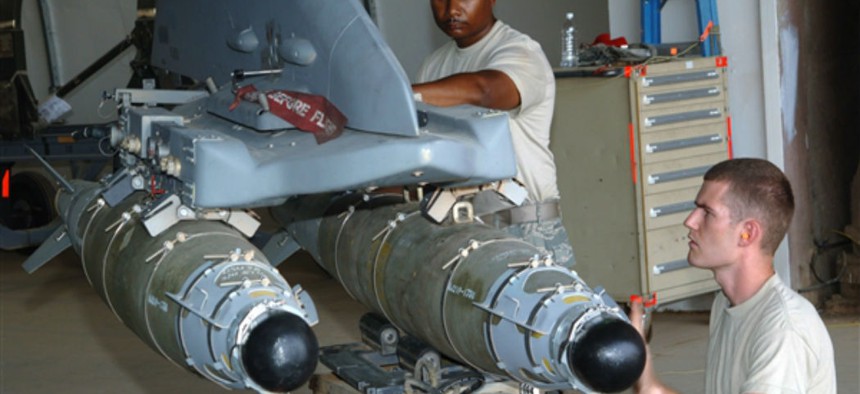Navy adds millimeter wave radar to AGM-88B anti-radiation missile
A Navy upgrade to an air-to-ground missile designed to target mobile enemy air defenses gives the weapon new millimeter wave radar.
The U.S. Navy is working with Orbital ATK to convert AGM-88B High Speed Anti-Radiation Missiles into 25 AGM-88E Advanced Anti-Radiation Guided Missile (AARGM) All-Up-Rounds as part of an effort to destroy relocatable air defenses.
Additional features of the AARGM include weapon-impact-assessment transmit, millimeter wave radar terminal seeker, global positioning system/Inertial Navigation System guidance, net-centric connectivity, and digital, anti-radiation homing sensor.
AGM-88E AARGM is used by the U.S. Navy, U.S. Marine Corps, and the Italian Air Force, to engage and destroy hostile air defenses and mobile targets that are time sensitive.
The AARGM was developed by Orbital ATK as a medium-range, air-to-ground missile. The main goal of this technology is to target enemy air defenses. This updated missile is designed to engage relocatable Integrated Air Defense targets.
Updates to this missile provide new capabilities include such features as advanced signal processing, improved frequency coverage, detection range, and field of view; missile-impact zone control to prevent collateral damage and bomb damage assessment, according to Orbital ATK.
AARGM will include the latest software and enhanced capabilities. The AARGM system is designed to be used as a counter radar shutdown. In addition, both a passive radar and an active millimeter wave seekers will be installed on the AARGM.
This new system will be compatible with strike aircraft such as the F/A-18 fighter bomber, EA-18G electronic warfare jet, Tornado, F-16, and F-35, said ATK officials.
The missile program is a joint venture by the U.S. Department of Defense and the Italian Ministry of Defense.
Work on this project will take place in Northridge, Calif. (80 percent); Ridgecrest, Calif. (10 percent); and Istrana, Italy (10 percent), and has an estimated completion date of March 2019. The work also includes related supplies and services necessary for their manufacture, sparing, and fleet deployment.




